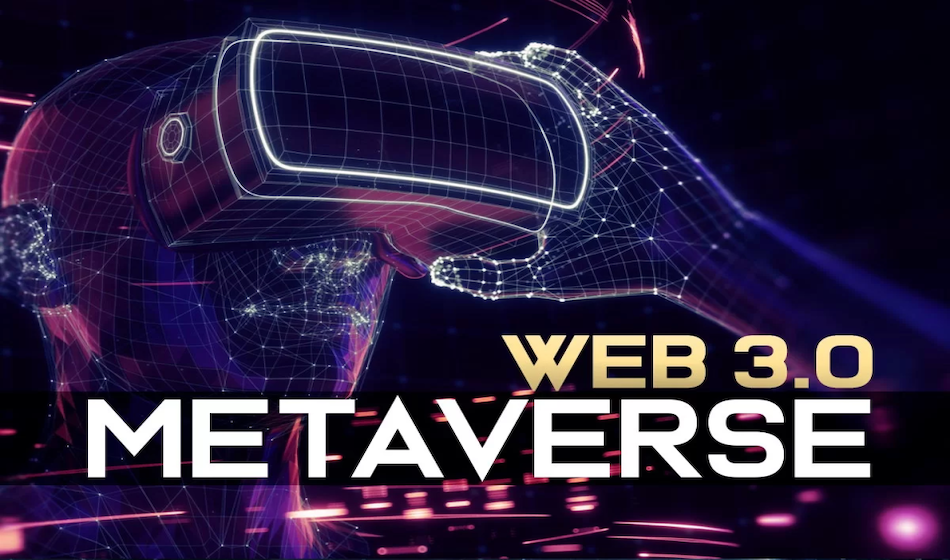
The Metaverse and Web3 Take Root in Asia: A Technological Playground with Untapped Potential
-
The tech-savvy youth of Asia are at the forefront of a global phenomenon – the rise of the metaverse and Web3. This new digital frontier promises a future where virtual worlds and decentralized ownership redefine the way we interact, consume, and create online. While still in its nascent stages, Asia is fertile ground for the metaverse and Web3 to take root, driven by a young, tech-savvy population, a burgeoning digital economy, and a growing appetite for innovation.
Understanding the Landscape: Metaverse and Web3 Defined
The metaverse is a conceptual future iteration of the internet, envisioned as a network of interconnected 3D virtual worlds accessed through avatars. Users can work, socialize, play games, and even own virtual assets within these immersive environments. Web3, on the other hand, refers to a decentralized version of the internet built on blockchain technology. Here, data and applications are not controlled by centralized entities but distributed across a peer-to-peer network, fostering greater user ownership and control.
Why Asia is Primed for the Metaverse and Web3 Revolution
Several factors contribute to Asia’s potential as a leader in the metaverse and Web3 space:
- Young and Tech-Savvy Population: Asia boasts the world’s youngest population, with a significant portion being digital natives comfortable with virtual environments and online gaming, a natural stepping stone to the metaverse.
- Rapid Internet Penetration: The region is experiencing a surge in internet penetration, with countries like South Korea boasting some of the fastest internet speeds globally. This robust infrastructure is crucial for seamless access to the metaverse and Web3 applications.
- Thriving Gaming Industry: Asia is a global leader in the gaming industry, with a large and engaged player base. This existing interest in virtual worlds positions the region well for the transition to the metaverse.
- Government Support: Several Asian governments are actively exploring the potential of the metaverse and Web3. For example, South Korea has announced plans to invest heavily in metaverse development, while Singapore is exploring the use of blockchain technology for various applications.
Current Landscape: Early Adopters and Use Cases
While still in its early stages, several companies and projects in Asia are actively exploring the possibilities of the metaverse and Web3:
Gaming and Entertainment:
- Metaverse Gaming: Develop and publish play-to-earn games similar to Axie Infinity, catering to the region’s large and engaged gaming audience.
- Virtual Events and Concerts: Create immersive virtual experiences for concerts, esports tournaments, and fan interactions.
- In-game Advertising and Product Placement: Offer brands opportunities to advertise or integrate their products within popular metaverse games.
E-commerce and Retail:
- Virtual Showrooms and Malls: Develop virtual shopping experiences where customers can browse products, try them on virtually, and make purchases within the metaverse.
- NFT-based Fashion and Collectibles: Offer limited-edition digital wearables or collectibles for avatars, partnering with fashion brands and artists.
- Supply Chain Optimization with Blockchain: Leverage blockchain technology for transparent and efficient tracking of goods within the supply chain.
Social Media and Content Creation:
- Decentralized Social Networks: Build social media platforms based on Web3 principles, giving users greater control over their data and content.
- Metaverse Content Creation Tools: Develop user-friendly tools for creating engaging 3D content and experiences for the metaverse.
- Virtual Influencer Marketing: Create and manage virtual influencers who can interact with audiences within the metaverse and promote brands.
Education and Training:
- Immersive Learning Experiences: Develop interactive and engaging virtual learning environments for various subjects.
- Skill Development for the Metaverse: Offer training programs to equip individuals with the skills needed to design, develop, and work within the metaverse.
- Virtual Collaboration Tools: Create platforms that facilitate remote learning and collaboration within the metaverse.
Finance and Investment:
- Decentralized Finance (DeFi) Platforms: Build DeFi platforms that offer alternative financial services like lending, borrowing, and trading in unbanked or underbanked regions.
- NFT-based Fundraising and Investment: Enable creators and businesses to raise funds through the issuance of NFTs.
- Metaverse Asset Management: Offer investment opportunities in virtual land, assets, and other elements within the metaverse.
Additionally:
- Infrastructure Development: Invest in building and expanding high-speed internet infrastructure to support widespread metaverse and Web3 adoption.
- Cybersecurity Solutions: Develop robust cybersecurity solutions to protect users and assets within the metaverse and Web3 ecosystem.
- Accessibility Tools: Design tools and technologies to make the metaverse accessible to a wider audience, including those with disabilities.
Challenges and Considerations in Asia
Despite the immense potential, several challenges need to be addressed for widespread adoption of the metaverse and Web3 in Asia:
- Accessibility: High-end hardware like VR headsets is currently expensive, potentially limiting access to the metaverse for a large segment of the population.
- Regulation: The nascent nature of Web3 necessitates a clear regulatory framework to address concerns around security, fraud, and money laundering.
- Digital Divide: Unequal access to the internet remains a challenge in some parts of Asia. Bridging this digital divide is essential for inclusive participation in the metaverse and Web3.
The Road Ahead: A Collaborative Future
The future of the metaverse and Web3 in Asia hinges on collaboration between various stakeholders:
- Tech Companies: Continuous innovation in hardware and software is needed to make the metaverse more accessible and user-friendly.
- Governments: Developing clear regulations that foster innovation while mitigating risks is crucial.
- Educational Institutions: Equipping the workforce with the skills needed to thrive in the metaverse and Web3 economy is essential.
Looking Beyond the Horizon: Potential Applications
The possibilities go beyond gaming and entertainment. Here are some potential applications of the metaverse and Web3 in Asia:
- Education: Immersive virtual learning experiences could revolutionize education, allowing students to explore historical sites or conduct scientific experiments in a virtual environment.
- Healthcare: The metaverse could facilitate remote consultations and virtual training for medical professionals.
- Workforce Collaboration: Virtual workspaces could enhance collaboration and communication within geographically dispersed teams.
A Catalyst for Growth
By fostering innovation, addressing challenges collaboratively, and harnessing the potential of its young, tech-savvy population, Asia can leverage the metaverse and Web3 to unlock new avenues for economic growth, social interaction, and creative expression. Here are some additional points to consider:
- The Rise of Creator Economies: Web3 empowers creators through tokenization and ownership of digital assets. This could empower artists, musicians, and content creators in Asia to monetize their work directly, fostering a vibrant creator economy.
- Decentralized Finance (DeFi): Web3 opens doors for innovative financial applications like DeFi, which could improve financial inclusion and provide access to alternative financial services in unbanked or underbanked regions of Asia.
- The Future of Work: The metaverse could reshape the future of work, enabling new forms of remote collaboration and virtual employment opportunities. This could have a significant impact on countries with large freelance or remote workforces in Asia.
A Call to Action
The metaverse and Web3 are still evolving, but the potential for Asia is undeniable. Embracing this digital revolution requires a multi-pronged approach:
- Individuals: Educate yourselves on the potential and limitations of these technologies. Explore different metaverse experiences and Web3 applications.
- Businesses: Identify opportunities to innovate and leverage the metaverse and Web3 within your industry. Invest in research and development to create unique experiences for your customers.
- Governments: Establish clear regulations that foster innovation while mitigating risks. Invest in infrastructure development to bridge the digital divide.
- Educational Institutions: Integrate relevant courses on blockchain technology, metaverse design, and Web3 development into your curriculum.
By working together, Asia can harness the transformative potential of the metaverse and Web3, creating a future where technology empowers individuals, fosters innovation, and propels the region towards a more connected and decentralized digital world.
